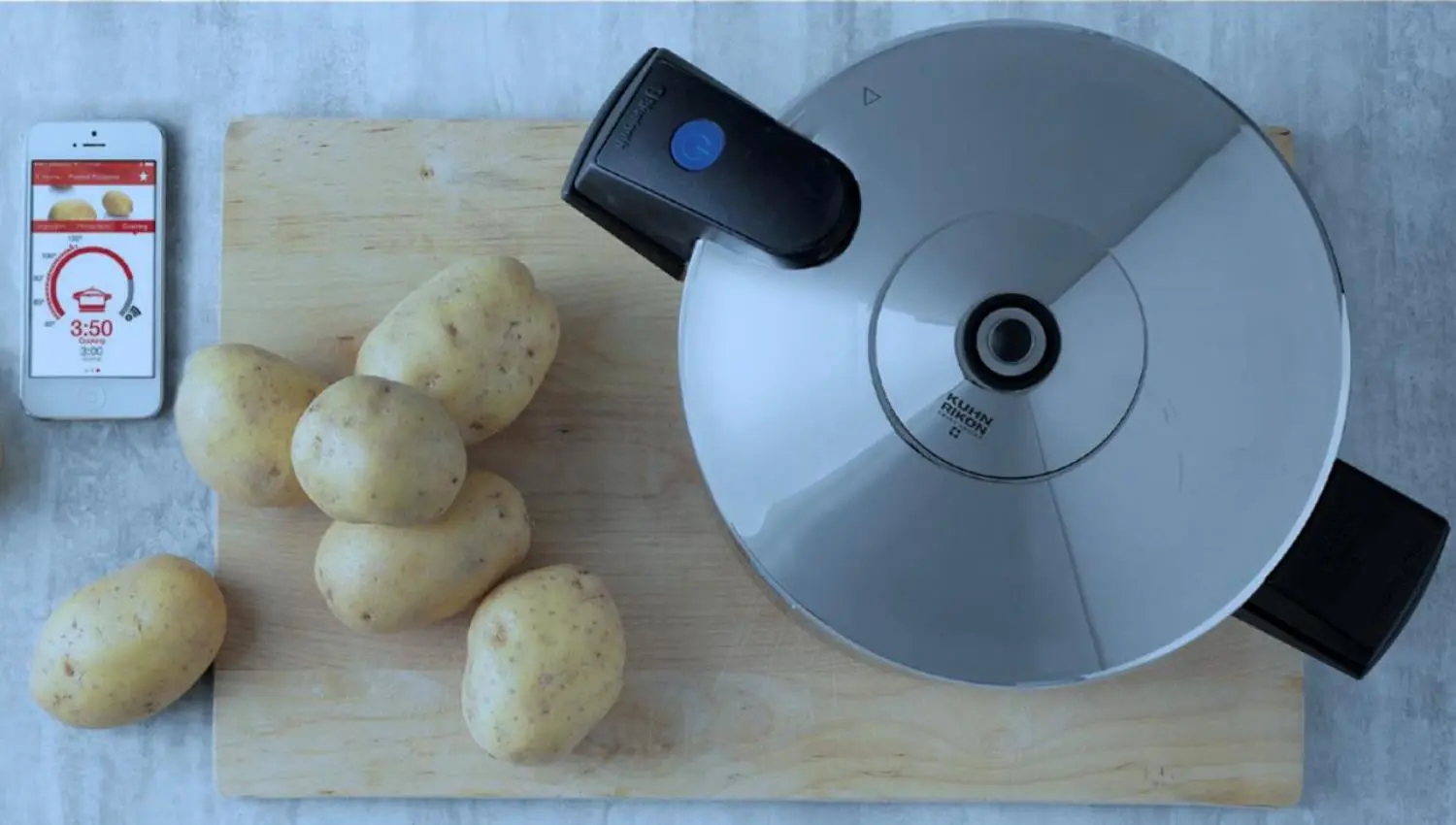Pressure-Cooker System
Together with Kuhn Rikon AG, the ZHAW School of Engineering has developed an innovative pressure-cooker system. It measures cooking temperatures independently and sends the user ongoing notifi-cations via a smartphone app about what needs to be done.
The new Duromatic® Comfort pressure cooker from Kuhn Rikon features an integrated temperature sensor and a Bluetooth control, which transmits the measured data to a smartphone or tablet. The system was developed at the ZHAW School of Engineering by the Institute of Mechatronic Systems (IMS) and the Institute for Signal Processing and Wireless Communications (ISC). The new pressure cooker has been available in retail shops for just a few weeks. It represents around two years of development time – with financial support from the Swiss Confederation’s Commission for Technology and Innovation (CTI).
App provides instructions
“Our task at the IMS was to evaluate a suitable sensor and develop an algorithm that could interpret the information received on the mobile device in such a way that it would be useful,” project head Michael Warden explains. Specific instructions based on the measured data are integrated for users into the app on a smart phone or tablet. The app tells the user in real time whether the heating element needs to be turned up or down and when the food is ready. To achieve this, the app has the cooking times for more than 70 foods saved on it – including the required amounts of water. The app also emits warning signals when the pressure cooker has too little water in it, for example, or if the pressure valve closed too quickly.
Ultra low power consumption
Developing an algorithm and implementing a temperature sensor did not finish the job, however. The information-sharing method between the pressure cooker and the mobile device also played a key role. “The solution had to be as cost-effective as possible so that the end product could be retailed at an attractive price,” says Michael Warden. “At the same time the sensor and wireless transmission had to use as little energy as possible so that the battery would last at least 10 years.” The ISC developed an electronics assembly with ultra low power consumption so that the sensor technology and Bluetooth transmission of the data can function without changing the battery. Data transmission with Bluetooth Low Energy and ultra low power electronics have already been part of the research field of the ISC for years.
“We are very satisfied with the solution. Thanks to our partnership with the ZHAW School of Engineering, we were able to manage the considerable demands placed on mechanics, information technology and electronics during the development.”
Rolf Zeindler, head of operations at Kuhn Rikon
Design specifications fulfilled
In addition to the low energy consumption, the relatively difficult ambient conditions presented a further challenge. “We had to keep in mind that the solution for the end product would be exposed to high temperatures and high degrees of humidity,” Michael Warden says. Finally, there were external demands to be met. “Our technical solution had to adhere to the corporate design specifications from Kuhn Rikon, so we had a brisk exchange going with the designers.” Rolf Zeindler, head of operations at Kuhn Rikon, believes that the results are gratifying. “We are very satisfied with the solution. Thanks to our partnership with the ZHAW School of Engineering, we were able to manage the considerable demands placed on mechanics, information technology and electronics during the development.” For the IMS, this project is its second successful collaboration with Kuhn Rikon after the development of the RELAX print steamer.
At a glance
Participating institutes and centres
- Institute of Mechatronic Systems (IMS)
- Institute for Signal Processing and Wireless Communications (ISC)
Project Partner:
Financing:
- Innosuisse (former CTI)
- Kuhn Rikon
Project status: completed
